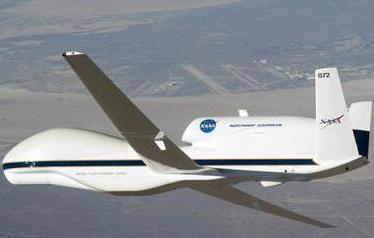|
|||||||||||||||||
|
|
|
|||
|
NASA Measures Low
Altitude Greenhouse Gases With Unmanned Aircraft By Steve Hall |
||||
 |
December 6, 2011 - For the first time, NASA researchers
have demonstrated the use of an unmanned aerial vehicle
(UAV) to collect very low altitude airborne measurements
of greenhouse gases at several sites in California and
Nevada. As Earth scientists strive to better understand sources and sinks of atmospheric greenhouse gases, a new aircraft capability developed at NASA Ames Research Center, Moffett Field, Calif. has the potential to provide critical measurements of carbon fluxes. The Sensor Integrated Environmental Remote Research Aircraft (SIERRA) team recently tested several instruments including a carbon dioxide, methane, and water vapor instrument as well as a wind probe for providing instantaneous measurements of greenhouse gas fluxes. SIERRA operates as part of a network of tools to observe carbon moving on our planet. |
|||
|
The
airborne system will assist scientists in their understanding of
carbon dioxide cycling between the land, ocean and atmosphere.
SIERRA complements other UAVs in the NASA science fleet by
specializing in dangerous, low altitude missions that require
significant payload capacity.
"Understanding the magnitude and location of carbon fluxes is
important for improving our understanding of how ecosystems
influence the composition of the atmosphere and the balance of
climatically important gases," said Laura Iraci, the principal
investigator of the NASA Ames team. "Tower networks currently
provide important information but their distribution is
pre-defined. Aircraft can play an important role by enabling
measurements where towers don't or can?t exist, and in studying
systems with features that move in time."
?For
example, in this desert environment, the areas of moist soil
vary with season, and thus the sampling locations of interest
will be different from season to season and year to year. The
requirements for collecting measurements at very low altitudes
(less than 100 ft) make it a dangerous proposition for pilots,
so unmanned aircraft provide a great solution,? Iraci added.
Matt
Fladeland, research scientist from NASA Ames Research Center
will discuss the SIERRA mission at the American Geophysical
Union in San Francisco on Dec. 5, 2011. |
||||


